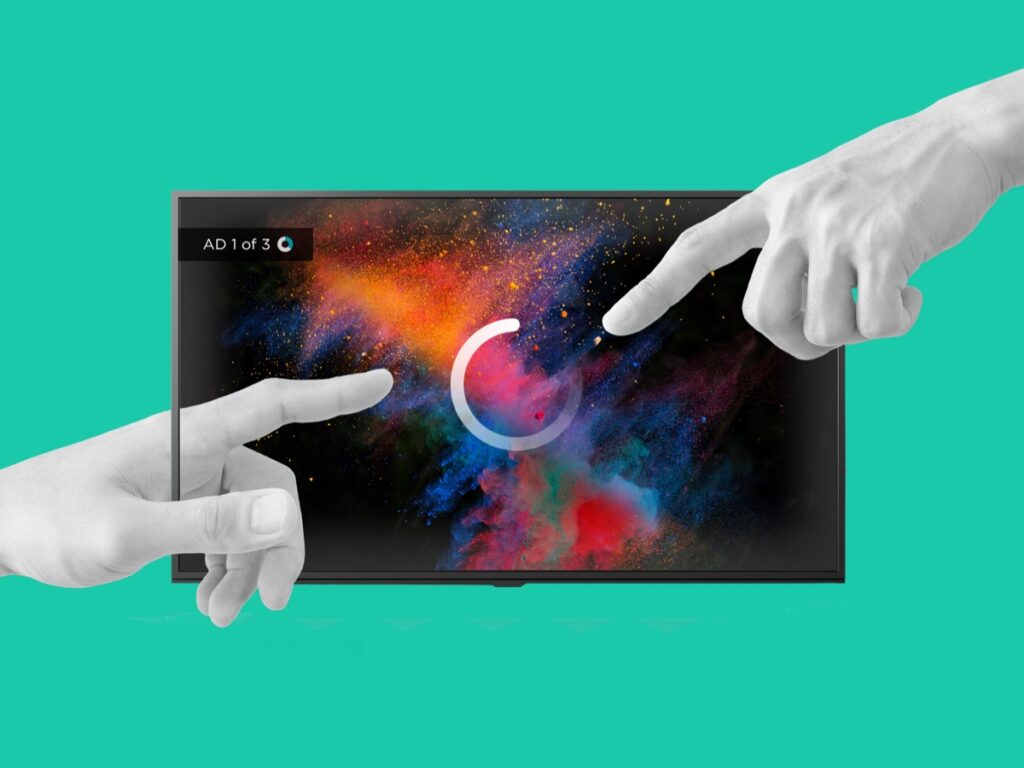From the MNTN Slack: What Netflix’s Q1 Report Signals About the Future of Streaming
by Cat Hausler
8 Min Read
CES 2024: Stagwell (STGW) and MNTN Announce Partnership in Unified Performance SolutionsLearn More
Connected TV raised the bar for performance marketing, but its creative evolution is turning heads, too.

3 Min Read
Trends in television advertising? You’d better believe it. Over the years and decades, we’ve seen everything from familiar jingles (if anyone needs a refresher, this Mentos ‘Freshmaker’ ad from the Nineties should ring a bell), to blockbuster budget commercials jumping on the cultural bandwagon (who could forget that Pepsi commercial from the early Noughties featuring Pink, Beyonce and Britney) and everything in between. In a similar fashion to, well, fashion, Connected TV (CTV) advertising is taking a leaf out of linear TV’s creative book—and writing a new chapter altogether.
Over the past week, there’ve been hints from adtech and publishers attempting to further personalize the CTV ad experience through product placement, except with technology lending a helping hand by digitally inserting brands into television shows to make up for lighter ad breaks on streaming services. Even brands want in. Marriott, one of the world’s largest multinational firms is partnering with Yahoo Inc. to roll out its own media network using their own first-party data, which plans to eventually serve digital ad placements on TV screens in guest’s hotel rooms, wifi portals and other digital screens in their properties.
Yes. Last week, Fast Company released an article diving into this very topic, concluding that “advertising makes all manner of entertainment and information and other services much cheaper, or even free, to many more consumers. And consumers like that.” This statement comes with a caveat, since not all channels are built the same. However, research shows that Connected TV viewers are more accepting of advertising than on other platforms in exchange for free online services versus those that do not watch CTV regularly (72% versus 61%). If we look at it through the lens of different generations, 60% of younger CTV audiences aged 16-34 years old see streaming ads as less intrusive than live ads. We have CTV’s targeting and creative prowess to thank for that, since advertisers have the ability to make ads relevant to viewers’ interests.
More personalization and taking the best parts of linear TV is only the first step in Connected TV’s climb to the top, where creative is concerned. Their next move? Using digital to redefine the creative model. While the industry waits to see how industry leader Netflix is going to enter the ad-supported market (granted, it’ll be a lot easier for them to get started since they can lean on other companies’ services for the audience and measurement portion), brands and advertisers should take a step back and re-examine their creative model and find ways to optimize it to be more performance-driven.
One way of championing this sentiment is through a creative partner to help build an ongoing supply of CTV creative so you can keep viewers engaged and never have to worry about them turning off your ads in the first place. This was once a pipedream during the days of linear TV, but now brands can refresh their CTV creative as often (and as easy) as they would do on their other digital channels like search and social media.
And while the creative process will differ versus those other channels (though it can be seriously streamlined with the right partnerships), the deployment of the creative is on par. The biggest difference (besides the size of the screen) for this new approach to creative is the fact that it removes the limitations once associated with creating impactful TV creative, with the intention of having a compounding effect over time across all areas of your business. After all, more fresh TV ads equals more audience attention, and that can only benefit the rest of your ad channels.
Subscribe to the report Apple, Amazon, NBC and more use to get their CTV news.